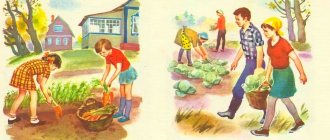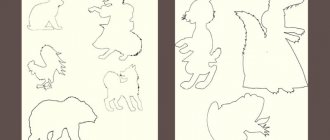10. Uranium-radium ores - dangerous energy
They are of great importance in the modern world, as they are used as fuel in nuclear power plants. These ores are mined in South Africa, Russia, Congo and a number of other countries.
It’s scary to imagine what could happen if, at this stage of its development, humanity loses access to the listed natural resources. In addition, not all countries have equal access to the Earth's natural resources. Natural resource deposits are not evenly distributed. Often it is because of this circumstance that conflicts arise between states. In fact, the entire history of modern civilization is a constant struggle for the possession of valuable resources of the planet.
2. Natural gas is the source of heat on the planet
The significance of this mineral is difficult to overestimate. Most natural gas fields are closely related to oil deposits. Gas is used as an inexpensive fuel for heating homes and businesses. The value of natural gas lies in the fact that it is an environmentally friendly fuel. The chemical industry uses natural gas to produce plastics, alcohol, rubber, and acid. Natural gas deposits can reach hundreds of billions of cubic meters.
6.Iron ores - the metallic heart of the Earth
They differ in iron content and chemical composition. Iron ore deposits are found in many countries around the world. Iron plays a significant role in the development of civilization. Iron ore is the main component for the production of cast iron. The following industries are in dire need of iron ore derivatives:
- metalworking and mechanical engineering;
- space and military industries;
- automotive and shipbuilding industries;
- light and food industries;
The leaders in iron ore production are Russia, China, and the USA.
In nature, it is found mainly in the form of nuggets (the largest was discovered in Australia and weighed about 70 kg). It also occurs in the form of placers. The main consumer of gold (after the jewelry industry) is the electronics industry (gold is widely used in microcircuits and various electronic components for computer technology). Gold is widely used in dentistry for the manufacture of dentures and crowns. Since gold practically does not oxidize and does not corrode, it is also used in the chemical industry. It is mined in South Africa, Australia, Russia, and Canada.
1.Oil is the “black gold” of the Earth
It is not for nothing that it is called “black gold”, because with the development of the transport industry, the life of human society began to directly depend on its production and distribution. Scientists believe that oil is a product of the decomposition of organic residues. It consists of hydrocarbons. Not many people realize that oil is part of the most common and necessary things for us.
In addition to being the basis of fuel for most types of transport, it is widely used in medicine, perfumery and the chemical industry. For example, oil is used to produce polyethylene and various types of plastic. In medicine, oil is used to produce petroleum jelly and aspirin, which is essential in many cases. The most surprising use of oil for many of us is that it is involved in the production of chewing gum. Solar batteries, which are indispensable in the space industry, are also produced with the addition of petroleum. It is difficult to imagine the modern textile industry without the production of nylon, which is also made from oil. The largest oil deposits are located in Russia, Mexico, Libya, Algeria, USA, and Venezuela.
Conversation with children about objects of living and inanimate nature.
The following objects are on the table: flowers, stone, doll.
IN.
Today we will talk again about living and inanimate nature. Tell me which of these objects is alive and which is not. (Children's answers.) Why do you think that a flower is living nature. Does stone belong to nature? What kind of nature is this? Why is a doll not nature? Guys, take one picture at a time, look at what is drawn on it, and if it is a living object, put the picture near a flower, if it is inanimate nature - near a stone, and if it is not nature, then put it near a doll. (Children look at the cards, the teacher checks with the children whether the task is completed correctly.) The teacher invites the children to sit on chairs.
Conversation with children on the physical map of their country
Q. Let's remember what nature is? A wonderful writer and nature lover M. Prishvin wrote: “We are the masters of our nature and for us it is a storehouse of the sun with great treasures of life. Fish is water, birds are air, animals are forests and mountains, and man needs a homeland. And protecting nature means protecting the Motherland.” What is the name of our Motherland? Look at the map, what country is shown on it?
Our country is not that big anymore, but it has a lot of wealth. You see how much green there is on the map, which means there are a lot of green forests. Blue color shows rivers and lakes. There are a lot of fish in the forest, and there are a lot of fish in the rivers and lakes. But there is also wealth inside the earth, in its depths. These riches are called minerals. These minerals are searched and found by people whose profession is geologists.
Imagine that we are geologists, and we are in a laboratory, and we will study minerals. A laboratory is where they examine, study, research various objects, and do experiments. Let's go to the tables, our laboratory will be there. (Children sit at tables.)
Experiments with children with minerals.
Q. The guys brought the minerals with a train, although it is a toy, the minerals are real. In the first carriage there are white pebbles. Take them in your hands and tell me what they are? (Chalk.) What is chalk for? Where did he come from? It turns out that long ago, where we live, there was a sea in which there were many snails in shells, time passed, the snails died, and their shells fell to the bottom of the sea. They were covered with sand and silt, their shells turned to chalk. People learned to extract chalk and use it. Doctors use purified chalk to give people healthy teeth and strong bones. This chalk is called calcium glucanate. Taste the tablet.
Let's try what's in the second trailer. (Salt.) Salt is also a mineral; it is mined in our state. At first it is called stone. Why do you think? And then it is ground, cleaned, and it becomes food. Why is it called food? Salt is mined near cities such as... (shows these cities on the map). but remember that we are geologists, and they are looking for minerals in the mountains, swamps, forests, overcoming any obstacles.
Children sit in front of the board, the teacher shows the cities and draws attention to the symbol on the map of oil.
IN.
Look how many black triangles there are, they show that in these places, deep underground, a river flows, the water in which can burn. Geologists found this river and drove a steel pipe into the ground. (Show picture.) A fountain of black water, which is called oil, came out of the pipe. (Showing oil in a test tube.) It is thick and burns. In special factories, petroleum is used to make gasoline, kerosene, asphalt resin, plastic and many other things. What is gasoline and kerosene used for, and what is made from plastic?
The children are invited to take a cup from the tray and drink some water. What is this? (Mineral water.) Mineral water is very useful for humans, and it is also found in the depths of our earth. We have many more minerals, such as..., but we will talk about them in the next lesson.
The world around us is filled with things and objects, without which it is impossible for humanity to exist. But in the bustle of everyday life, people rarely think about the fact that we owe all the benefits of modern life to natural resources.
Our achievements are breathtaking, aren't they? Man is the pinnacle of evolution, the most perfect creation on Earth! Now let’s think for a moment why we achieved all these benefits, what forces should we thank, what and to whom do people owe for all their benefits?
Having carefully looked at all the objects around us, many of us for the first time realize the simple truth that man is not the king of nature, but only one of its constituent parts.
Since most modern goods people owe to natural resources
extracted from the bowels of the Earth
Modern life on our planet is not possible without the use of natural resources. Some of them are more valuable, others less, and without some, humanity cannot exist at this stage of its development.
We use them to heat and light our homes and quickly get from one continent to another. Maintaining our health depends on others (for example, it can be mineral waters). The list of minerals valuable to humans is huge, but we can try to identify the ten most important natural elements, without which it is difficult to imagine the further development of our civilization.




